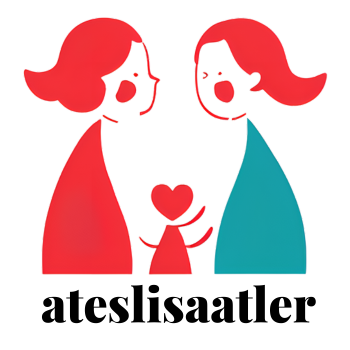
As a genealogy enthusiast I’ve discovered that creating a blended family tree can be both challenging and rewarding. When families merge through marriage bringing together different branches histories and traditions the process of documenting these connections requires special consideration and care.
I’ll guide you through the intricacies of mapping out your blended family’s unique story. Whether you’re dealing with stepparents adoptive relationships or multiple marriages understanding how to properly represent these modern family dynamics in your genealogical records is essential. Creating an inclusive family tree that honors all relationships isn’t just about documentation – it’s about celebrating the beautiful complexity of today’s families while preserving their legacy for future generations.
Key Takeaways
A blended family tree is a specialized genealogical diagram that documents connections between families united through marriage, including stepparents, stepsiblings, half-siblings, and adoptive relationships
Different line styles are used to represent various relationships: solid lines for biological connections, double lines for marriages, dotted lines for adoptive bonds, and dashed lines for step-relationships
Key documentation needed includes birth certificates, marriage certificates, divorce decrees, adoption papers, and legal custody agreements to accurately map family connections
Digital family tree software and traditional genogram formats offer different advantages for documenting blended families, with digital options providing interactive features and traditional formats offering standardized symbols
Maintaining accurate records requires consistent notation systems, regular updates, and careful attention to privacy concerns when sharing family information
Special consideration must be given to documenting former spouses, step-grandparents, and extended family members to create a complete genealogical record while respecting all family bonds
Blended Family Tree
A blended family tree illustrates the genealogical connections in families formed when parents with children from previous relationships unite through marriage. I create these specialized family trees to document complex family structures that include stepparents, stepsiblings, half-siblings, adoptive relationships, former spouses.
The structure captures three key relationship types:
- Biological connections linking parents to their birth children
- Legal bonds established through marriage or adoption
- Step-relationships formed when families merge
Here’s how the relationships typically appear in a blended family tree:
| Relationship Type | Connection Type | Documentation Required |
|---|---|---|
| Biological | Direct bloodline | Birth certificates |
| Legal | Marriage/Adoption | Marriage/Adoption records |
| Step-relationships | Marriage-based | Marriage certificates |
The distinguishing features of a blended family tree include:
- Multiple parent sets shown on different branches
- Step-siblings connected through parent marriages
- Half-siblings sharing one biological parent
- Former spouses included to show complete lineage
- Adoption indicators marking legal parent relationships
I use specific symbols and notation systems in blended family trees to differentiate between:
- Biological relationships (solid lines)
- Marriage connections (double lines)
- Adoptive bonds (dotted lines)
- Step-relationships (dashed lines)
- Former marriages (crossed lines)
These specialized diagrams require additional documentation compared to traditional family trees, including marriage certificates, adoption papers, divorce decrees, birth records, legal custody agreements.
Types of Blended Family Trees
Blended family trees come in distinct formats designed to represent complex family relationships accurately. Each format serves specific documentation needs while maintaining genealogical clarity.
Traditional Genogram Style
Traditional genogram-style blended family trees use standardized symbols connected by lines to show relationships. Family members appear as squares (males) triangles (females) with specific line patterns indicating:
- Double lines: Marriage bonds between partners
- Dashed lines: Step-relationships between family members
- Dotted lines: Adoptive relationships
- Zigzag lines: Conflict or estrangement
- Thick lines: Close emotional bonds
- Cross marks: Divorce or relationship dissolution
- Interactive charts: Click-expandable relationship details
- Color coding: Different hues marking biological stepfamily groups
- Multiple view options: Horizontal vertical circular displays
- Smart symbols: Automated relationship indicators
- File attachments: Marriage certificates adoption papers photos
- Timeline integration: Key family events chronological display
- Print export options: High-resolution charts for documentation
- Cross-platform sync: Updates across desktop mobile devices
| Format Type | Key Features | Best Used For |
|---|---|---|
| Genogram | Standardized symbols relationship lines | Clinical family studies therapy |
| Digital | Interactive customizable shareable | Online genealogy research sharing |
| Hybrid | Combined traditional digital elements | Professional documentation research |
Creating Your Blended Family Tree
Creating an accurate blended family tree starts with systematic documentation of relationships spanning multiple family units. Here’s how to build a comprehensive genealogical record that honors all family connections.
Gathering Family Information
I begin by collecting vital records for each family member:
- Birth certificates to establish biological relationships
- Marriage certificates from current & previous unions
- Divorce decrees documenting legal separations
- Adoption papers verifying legal parent-child bonds
- Death certificates for deceased family members
- Legal documents showing name changes or guardianship
Key details to document for each person:
- Full legal name including maiden names
- Birth date & location
- Marriage dates & locations
- Divorce dates if applicable
- Step-relationship start dates
- Current contact information
Choosing the Right Format
I select from these primary documentation methods:
Digital Formats:
- Family tree software (Ancestry, MyHeritage, FamilySearch)
- Online genealogy platforms with blended family templates
- Cloud-based collaborative tools for shared editing
Traditional Formats:
- Genogram with standardized relationship symbols
- Multi-generational charts with color coding
- Fan charts for extended family visualization
- Number of family members to include
- Complexity of relationships to display
- Sharing & collaboration requirements
- Privacy preferences
- Digital vs physical storage needs
| Format Type | Best For | Key Features |
|---|---|---|
| Digital Software | Large families | Auto-updates, sharing |
| Genogram | Clinical use | Relationship symbols |
| Fan Chart | Visual display | Space efficiency |
| Multi-gen Chart | Documentation | Detailed information |
Common Challenges When Mapping Blended Families
Creating accurate representations of blended family relationships presents unique genealogical complexities. I’ve identified specific challenges that require careful attention when documenting these intricate family connections.
Multiple Marriages and Relationships
Multiple marriages create layered relationships that demand precise documentation methods. I use distinct symbols to differentiate between current spouses (□═══□) former spouses (□- – -□) in genealogical charts. Each marriage requires separate documentation:
- Marriage dates connect to specific time periods
- Legal status verifications establish relationship validity
- Cross-referencing systems link related family units
- Chronological markers indicate relationship sequences
- Documentation trails connect multiple family branches
- Color-coding systems distinguish relationship types
- Connecting lines show biological versus step-relationships
- Generation markers maintain chronological accuracy
- Relationship indicators specify familial connections
- Cross-reference tables link siblings across family units
| Relationship Type | Documentation Required | Symbol Convention |
|---|---|---|
| Step-siblings | Marriage certificates | Dotted lines |
| Half-siblings | Birth certificates | Solid lines |
| Former step-siblings | Divorce decrees | Broken lines |
| Adoptive siblings | Adoption papers | Double lines |
| Guardian relationships | Legal documents | Dashed lines |
Tips for Including Extended Family Members
Including extended family members in a blended family tree requires specific documentation strategies for clear relationship representation. Each connection demands careful consideration to maintain accuracy while honoring family bonds.
Step-Grandparents and Step-Cousins
Step-grandparents connect to the family tree through marriage to biological grandparents, creating new branches of relationships. I document these connections using dotted lines to distinguish them from biological relationships, with dates of marriage noted to establish the timeline of the relationship. Step-cousin relationships emerge through:
- Marriage dates between step-grandparents and biological grandparents
- Birth dates of step-aunts and step-uncles
- Children of step-aunts and step-uncles (step-cousins)
- Adoption records if applicable
- Current contact information for maintaining relationships
Former Spouses and Their Relatives
Former spouses retain their place in the family tree when children are involved, ensuring complete genealogical records. I use these specific identifiers:
- Double lines to indicate dissolved marriages
- Dates of marriage and divorce
- Shared custody arrangements
- Children’s relationships with former in-laws
- Step-sibling connections through previous marriages
- Current legal status of relationships
| Relationship Type | Required Documentation | Symbol Used |
|---|---|---|
| Former Spouse | Marriage & Divorce Certificates | Double Line (====) |
| Step-Grandparent | Marriage Certificate | Dotted Line (…..) |
| Step-Cousin | Parent’s Marriage Certificate | Dash-Dot Line (-.-.-) |
| Former In-Laws | Original Marriage Certificate | Dashed Line (- – -) |
Best Practices for Family Tree Documentation
Standardized Notation Systems
I use consistent symbols throughout my blended family tree documentation to maintain clarity. A solid line represents biological relationships, a dotted line indicates step-relationships, and a double line shows adoptive bonds. Each relationship category receives specific markers: triangles for marriages, circles for divorces, and squares for legal guardianships.
Record-Keeping Protocols
My documentation system includes digital copies of vital records stored in categorized folders:
- Marriage certificates labeled by date and family branch
- Adoption papers with corresponding court dates
- Divorce decrees organized chronologically
- Birth certificates cross-referenced with parental relationships
- Legal custody agreements linked to relevant family members
Version Control Management
I maintain separate versions of my family tree documentation:
- Master copy with complete relationship details
- Public version omitting sensitive information
- Digital backup updated monthly
- Print copies distributed to immediate family
- Working draft for ongoing research
Verification Methods
My verification process incorporates multiple checkpoints:
- Cross-reference dates across different documents
- Compare information with multiple family sources
- Match legal records with personal accounts
- Verify name spellings against official documents
- Document conflicting information in research notes
Data Organization Table
| Document Type | Storage Format | Update Frequency | Access Level |
|---|---|---|---|
| Core Records | Digital + Print | Quarterly | Immediate Family |
| Legal Papers | Encrypted Digital | Bi-annual | Private |
| Photos | Cloud Storage | Monthly | Extended Family |
| Research Notes | Digital Database | Weekly | Personal |
| Family Stories | Digital Archive | Bi-monthly | Public |
- Restrict access to living persons’ data
- Code names for minors in public records
- Password-protect digital files
- Redact personal identifiers in shared versions
- Create separate trees for public genealogy sites
Labor of Love
Creating a blended family tree is a labor of love that requires dedication patience and attention to detail. I’ve found that the reward of documenting these complex family connections far outweighs the challenges of organizing and verifying diverse relationships.
Through my experience I’ve learned that a well-documented blended family tree becomes more than just a genealogical record – it’s a celebration of how love and commitment can bring different family units together. Modern tools and techniques have made it easier than ever to capture these intricate relationships while protecting privacy and maintaining accuracy.
Remember that each blended family tree tells a unique story of resilience adaptation and growth. By carefully documenting these connections we’re preserving invaluable family history for generations to come.




